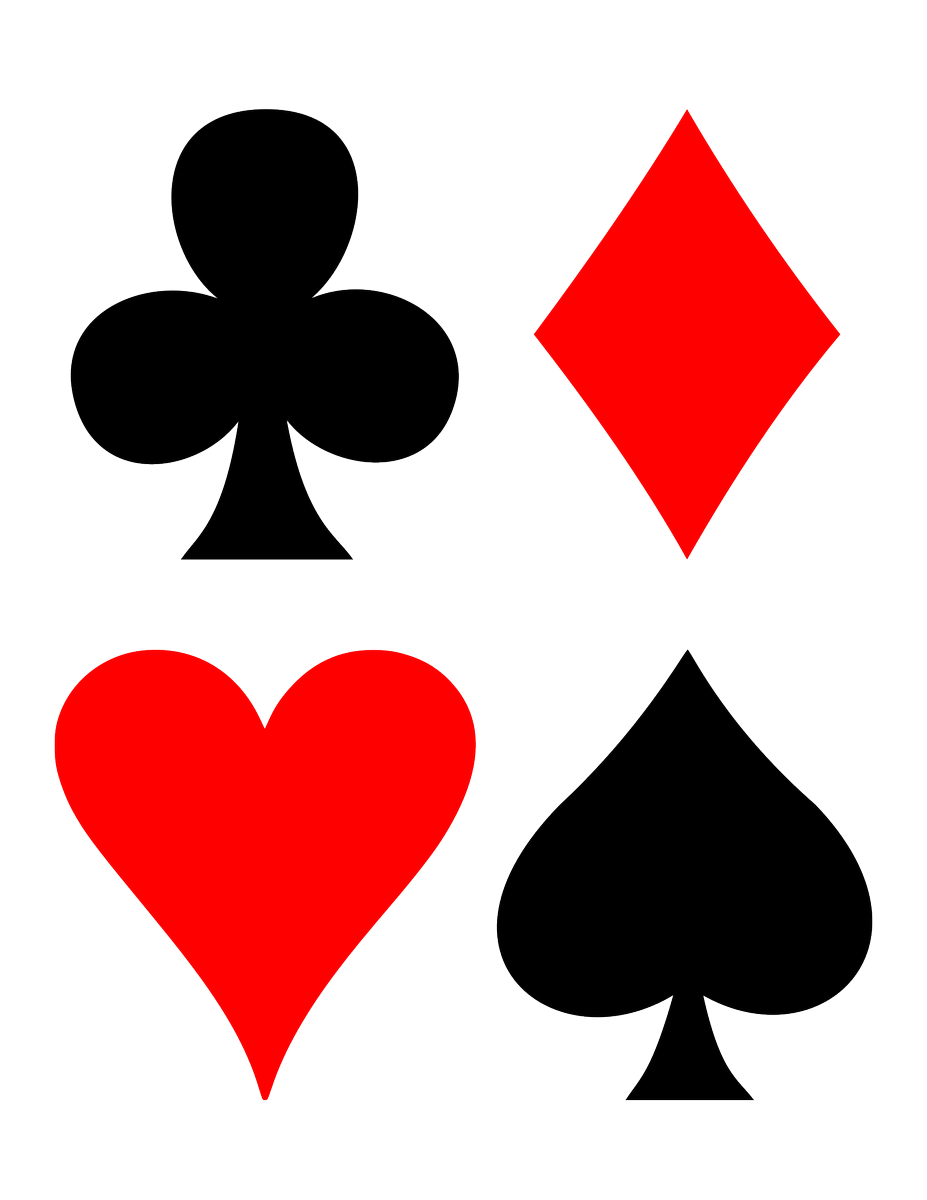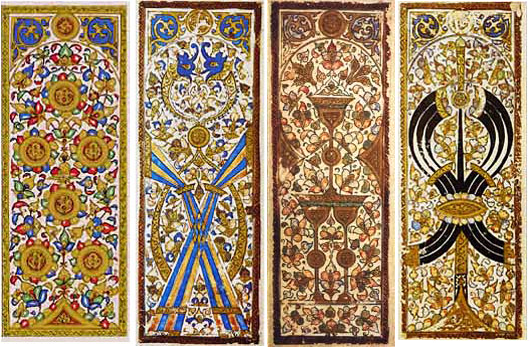Where did the modern card suit symbols originate from? Also why are the clovers and pikes named clubs and spades in English? It makes no sense! Let's explore the evolution of the card decks and symbols of card suits in medieval Europe!🧵



It is believed that card games arrived to Europe from Mamluk Egypt around 1370. Playing cards have already existed in China way earlier and have made their way to Europe through the Muslim world. The Mamluks used suits of cups, coins, swords, and polo-sticks!



In Europe they first reached Spain and Italy. They used Mamluk suits but changed polo sticks into clubs. Also just like on Mamluk cards the early European card suits initially had no queens but three male faces instead. They're still used today known as Latin-suited cards!



The male figure used instead of queen is called knight. The Latin card decks differ from region to region and have changed slightly over the history, but they all use the suits of swords, cups, coins and clubs. Here are the knights on the Portuguese pattern from 17th century!

But as playing cards became popular in other parts of Europe, different suits were used. Germans didn't seem to like Latin suits and introduced their own suits of hearts, bells, leaves and acorns! Around 1450 these symbols became standard suits in German speaking lands.

They're still used today on what is known as German-suited cards. Different patterns exist. In late 15th century the German cards would become popular all over Europe because of use of engraving techniques by German card makers that made cards easier to produce!




An example of 16th century playing cards, a German-suited set of playing cards made in 1540 by Peter Flötner. The cards were hand painted and enhanced with gold!

The German-suited cards used to have a queen but it was dropped in early 16th century, using two knaves known as Unter and Ober instead. The Swiss used a slightly different deck with suites of shields and roses replacing leaves and hearts! A modern Swiss-suited deck.

The German-suited decks also spread to non-German speaking parts of Central Europe where they are still used. The 19th century Tell pattern of German suited cards is still widespread in lands of former Kingdom of Hungary, depicting the characters from Schiller's Wilhelm Tell.

The rural symbols on German suits such as acorns and leaves, that replaced the symbols associated with power and nobility on Latin suits such as swords and coins, also reflect how card games became widespread among different social groups, no longer being played only by nobles.

The German suited cards became more popular than the Latin ones and became exported to Western Europe. But it would be in France that the symbols for suits internationally used today were finally developed in late 15th century!

The French changed the German suits except hearts. They divided the four suits into only two colors and used simplified and clearer symbols to make the cards easier to print! The bells were changed into tiles, acorns became clovers and leaves became pikes.

The French also reintroduced the queen. They would achieve dominance on the playing card market and French suits would eventually take over in much of Europe. From France the cards made their way to England where they would eventually begin using the Rouen pattern.

Rouen was an important center for card making. In 1567 Pierre Marechal made a pack of cards from which the English pack subsequently evolved. When England banned the importation of cards in 1628, English printers used Rouen court cards as inspiration for their own packs!

Due to the global spread of English culture in the following centuries, it would be the Rouen pattern of French-suited playing cards that would evolve into the most known pattern in the world, today called the International or Anglo-American pattern.

But another mystery remains. Why do the English use these weird names clubs and spades for clovers and pikes? It is assumed that before they used the French cards, the English were already familiar with the Latin suited decks, and retained the Latin names!

Therefore the clovers are still named clubs like in Latin suits and spades also comes from espadas, meaning swords. It looks like the English began using new French symbols for suits while retaining some of the old Latin names!

But the French cards also spread to German speaking parts of Europe. During the Thirty Years' War 1618-48, French soldiers spread their cards to German speaking territories where they became popular. The old German suits are only still used in orange areas of the map!

From Germany the French suits would expand further into Eastern Europe all the way to Russia where cards were banned for a long time, but used by nobles who imported them anyway. In 1862 Russian painter Adolf Charlemagne designed a French-suited deck for Russia.


The French-suited decks used in continental Europe had different patterns, but not as distinct as Latin or German ones as the Paris pattern was mass produced as the dominant one, and all other ones closely resemble it.

